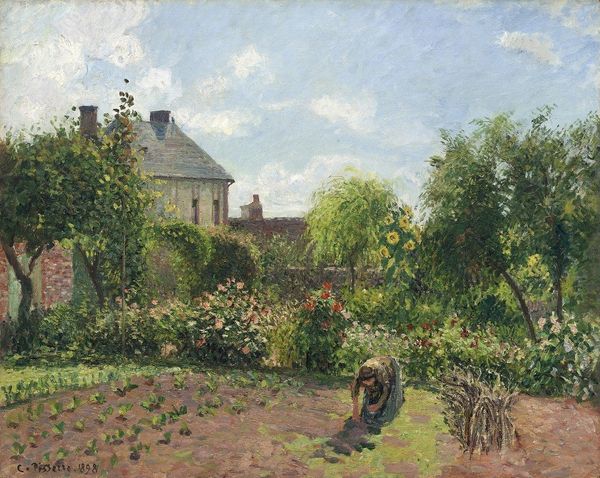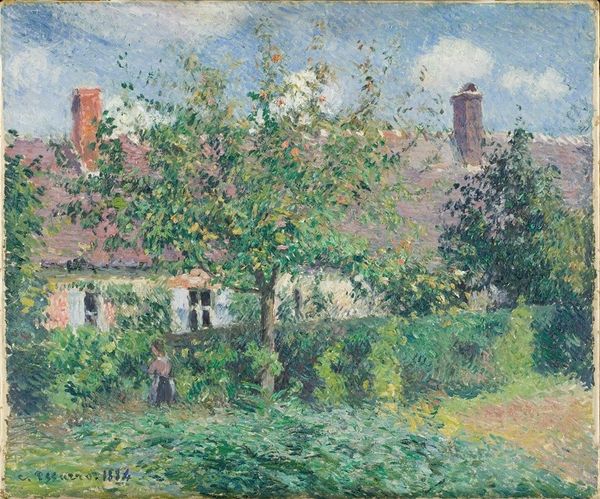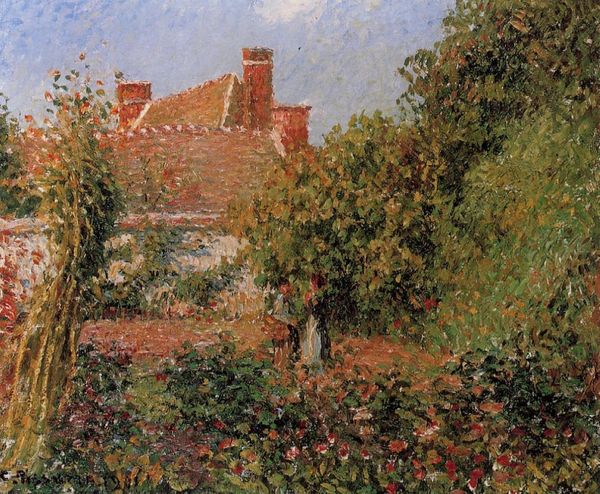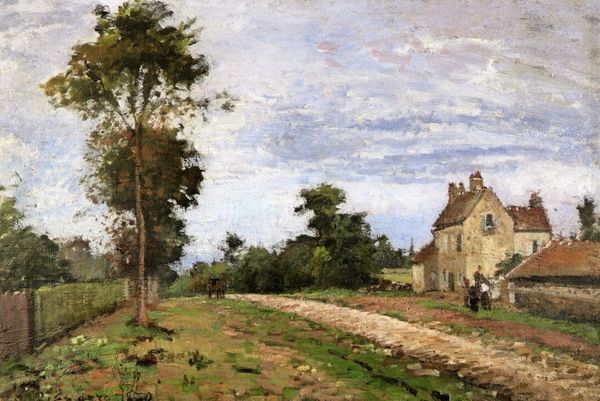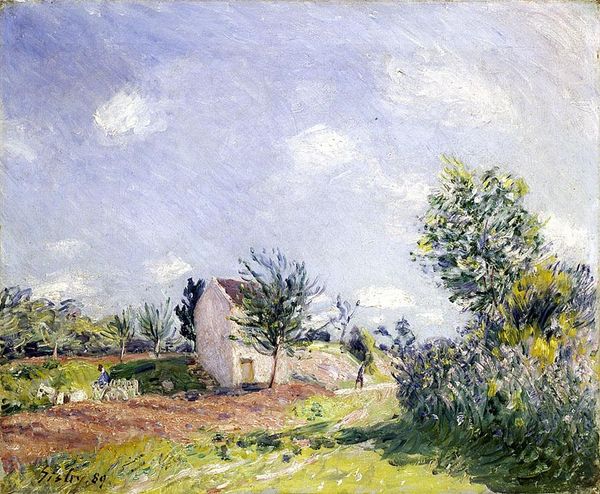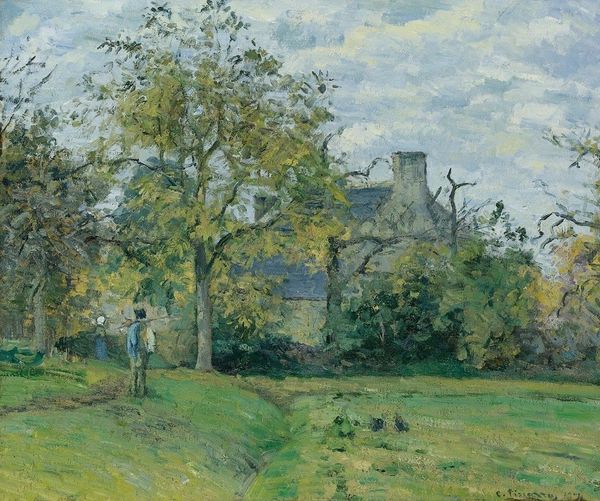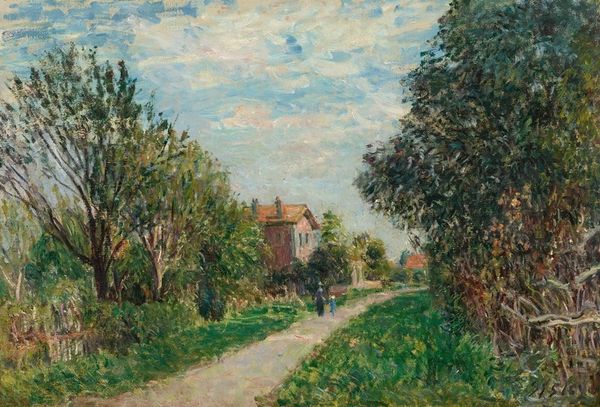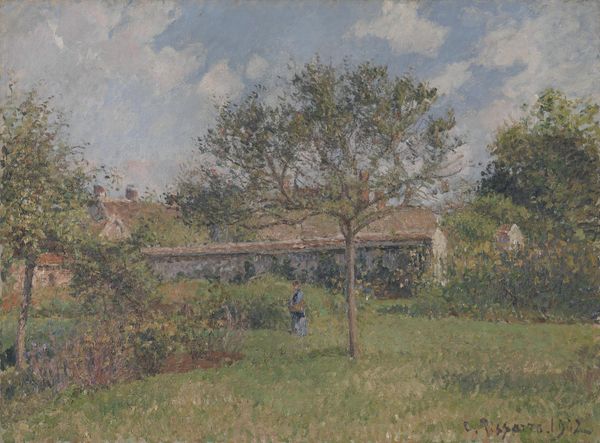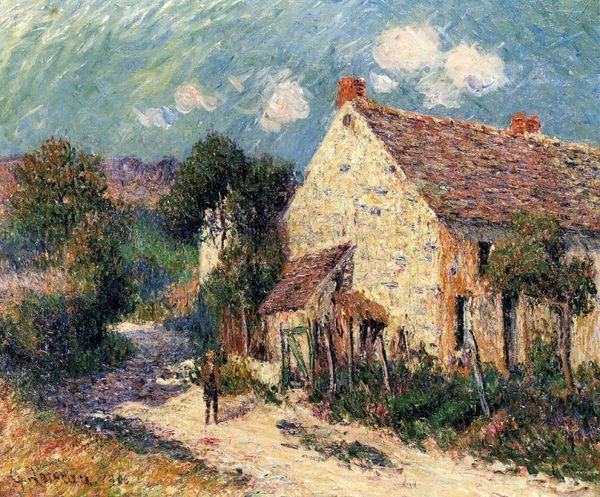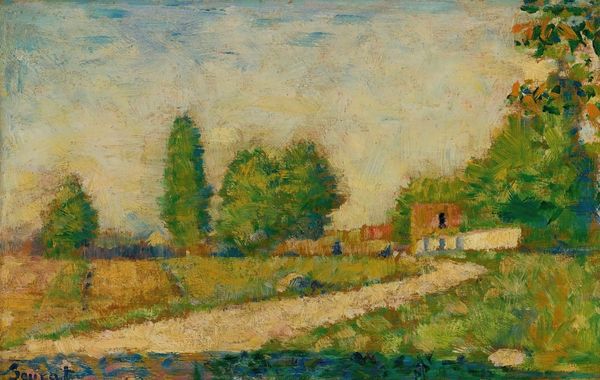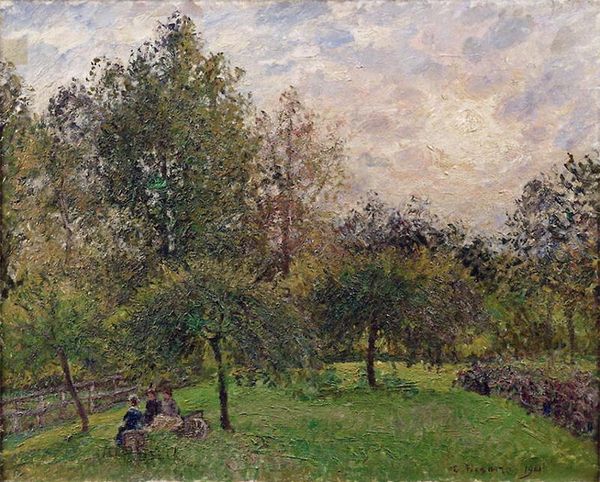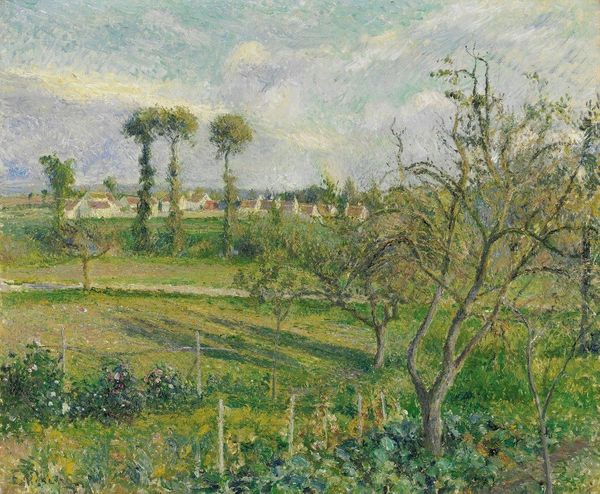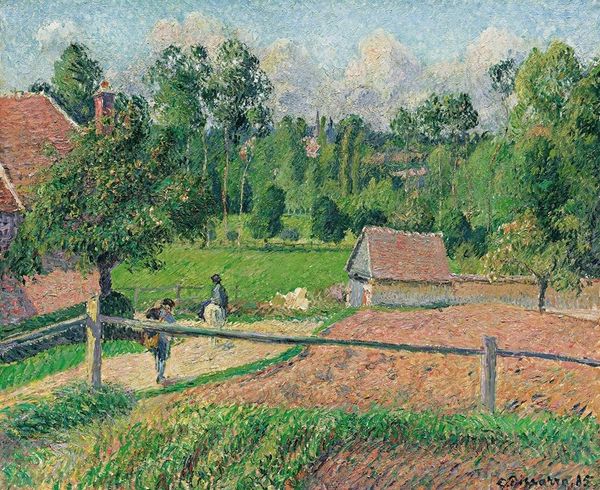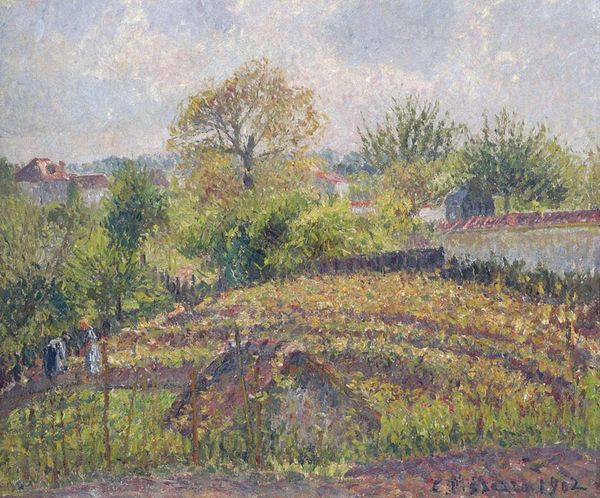
painting, plein-air, oil-paint
#
painting
#
impressionism
#
impressionist painting style
#
plein-air
#
oil-paint
#
landscape
#
impressionist landscape
#
nature
#
form
#
oil painting
#
genre-painting
#
realism
Copyright: Public Domain: Artvee
Curator: Let’s discuss Camille Pissarro's "La Maison Rondest et Son Jardin à L’hermitage, Pontoise" painted in 1878, primarily with oils. Editor: What strikes me immediately is the incredibly dense foliage, like the buildings are almost being swallowed up by nature. What can you tell me about it? Curator: I find the texture fascinating, achieved through the sheer labor and materiality evident in Pissarro’s brushwork. Consider the economic realities of plein-air painting at the time; the cost of paints, canvases, the sheer physical exertion of working outdoors in varied weather conditions. What does the very process of creating this work tell us? Editor: It shows dedication and, perhaps, an investment in capturing a specific moment in time. Do you see it reflecting the social context? Curator: Absolutely. Pissarro isn’t just representing a landscape; he is showcasing the intersection of labor and land. The figure working in the garden grounds the composition, connecting the viewer to the realities of agricultural labor. It challenges this romanticized notion of nature. Can you see a similar narrative being produced today by other artists in other contexts? Editor: Yes, thinking about contemporary land artists and the debates surrounding environmentalism and artistic practice... Curator: Precisely. Pissarro isn’t just offering a view, but an insight into a working landscape. Look how he meticulously rendered that figure; her labor is intrinsically woven into the scene. The labor required of the artist is analogous to the manual worker in the field; each interacting with material conditions. Editor: I’d not thought of that before, about connecting artistic creation with the everyday work of, say, agriculture. The materiality and the method becomes the core focus. Thanks! Curator: And I appreciate your willingness to consider the artist as a producer. Thinking critically about art involves considering all contributing social and material forces.
Comments
No comments
Be the first to comment and join the conversation on the ultimate creative platform.
